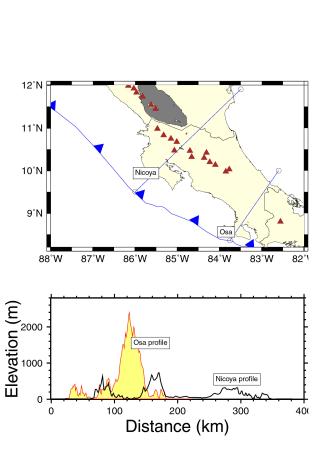
Topographic cross sections for two areas in Costa Rica experiencing active subduction, with the oceanic Cocos plate subducting beneath the western edge of the Caribbean plate (Central America) which includes continental or transitional arc-continental crust. Red triangles are active volcanoes. The northern profile (across the Nicoya Peninsula) shows relatively low topography. Active subduction here has not led to shortening and thickening of the overlying arc-continental crust. The southern profile, across the Osa Peninsula, shows the high topography of the Talamanca Range. Radioactive dating indicates that much of this topography is very young, developed in the last 10 million years. Our GPS studies suggest that this is also a region of high "locking" on the seismogenic zone, providing a possible explanation for the relief of the Talamanca Range. Independent data on crustal thickness is not yet avaialble for this region, which might indicate that high topography is associated with crustal shortening and thickening, similar to the Andes Mountain in South America. From Norabuena et al. [2004].